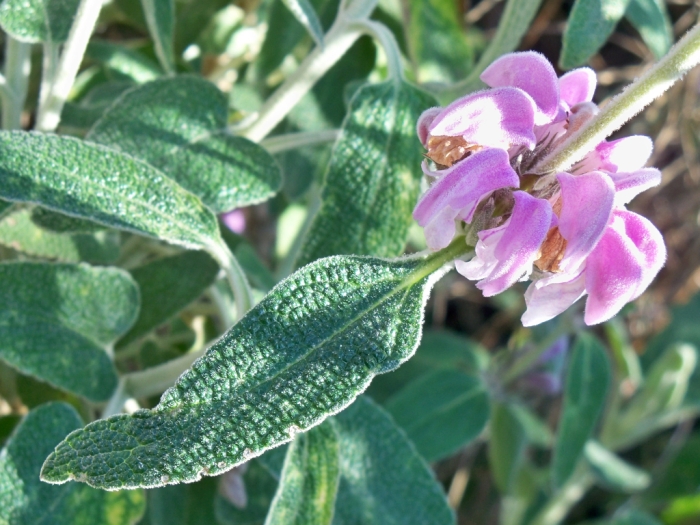Purple Jerusalem Sage
(Phlomis purpurea)
Purple Jerusalem Sage (Phlomis purpurea)
/
/

Daniel Capilla
CC BY-SA 4.0
Image By:
Daniel Capilla
Recorded By:
Copyright:
CC BY-SA 4.0
Copyright Notice:
Photo by: Daniel Capilla | License Type: CC BY-SA 4.0 | License URL: http://creativecommons.org/licenses/by-sa/4.0/ | Rights Holder: Daniel Capilla | Publisher: iNaturalist | Date Created: 2021-03-21T16:32:33-07:00 |

















































Estimated Native Range
Summary
Phlomis purpurea, commonly known as Purple Jerusalem Sage, is an evergreen shrub native to the Mediterranean region, including North Africa, Portugal, and Spain, where it thrives in open woodlands and scrub areas. It typically grows to a height and width of 4-6 feet (1.2-1.8 meters), forming a rounded, bushy silhouette. The plant is characterized by its square stems and textured, heart-shaped leaves that are gray-green in color. From late spring to early summer, whorls of tubular, two-lipped purple flowers appear, which are highly attractive to bees and other pollinators. The flowers are quite showy and add a splash of color to the landscape.
Purple Jerusalem Sage is valued for its drought tolerance and its ability to thrive in poor, well-drained soils, making it an excellent choice for water-wise gardens and xeriscaping. It is often used in Mediterranean-style plantings, as a border shrub, or in mass plantings for a bold visual impact. Full sun is preferred for optimal flowering, and once established, it requires minimal maintenance. While generally pest-free, it can occasionally suffer from root rot if overwatered or planted in poorly drained soils.CC BY-SA 4.0
Purple Jerusalem Sage is valued for its drought tolerance and its ability to thrive in poor, well-drained soils, making it an excellent choice for water-wise gardens and xeriscaping. It is often used in Mediterranean-style plantings, as a border shrub, or in mass plantings for a bold visual impact. Full sun is preferred for optimal flowering, and once established, it requires minimal maintenance. While generally pest-free, it can occasionally suffer from root rot if overwatered or planted in poorly drained soils.CC BY-SA 4.0
Plant Description
- Plant Type: Shrub
- Height: 4-6 feet
- Width: 4-6 feet
- Growth Rate: Moderate
- Flower Color: Pink, Purple
- Flowering Season: Spring, Summer
- Leaf Retention: Evergreen
Growth Requirements
- Sun: Full Sun
- Water: Low
- Drainage: Fast
Common Uses
Bee Garden, Bird Garden, Border Plant, Butterfly Garden, Deer Resistant, Drought Tolerant, Fragrant, Hedges, Low Maintenance, Potted Plant, Street Planting
Natural Habitat
Native to Mediterranean open woodlands and scrub areas
Other Names
Common Names: Lampwick Plant
Scientific Names: , Phlomis purpurea,
GBIF Accepted Name: Phlomis purpurea L.